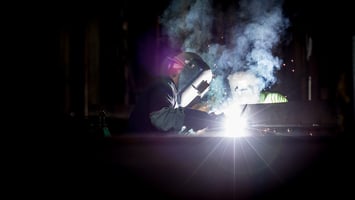"Stripped down to nuts and bolts, would you still know your product?" Imagine the satisfaction of...
Lane-Assist or Autopilot: Understanding the difference in CPQ Systems
"Ready for a tech takedown? In the red corner, we have the trusted lane-assist, aka rules-based CPQ, and in the blue corner, the tech titan, the constraint-based CPQ system. Which one will deliver the knockout punch in the sales ring?"
This isn’t just a bout of technological one-upmanship; it’s a pivotal decision that could turbocharge your business's efficiency or leave it idling in complexity's exhaust. Let’s shift gears and dissect why, in the high-stakes world of CPQ systems, constraint-based solutions are stealing the limelight and why clinging to rules-based systems might be holding your business back from its pole position.
Contrary to the well-trodden path of rules-based CPQ systems, the future of product configuration is veering towards a smarter, more dynamic route: constraint-based configurators. These systems are equipped to handle intricate product structures with the precision and intellect of a grandmaster chess player, marking a shift from a manual, restrictive setup to a strategic, freeing approach that businesses need to embrace to stay ahead. Should come as no surprise that we find a constraint-based as the leader of the leaders in Gartner Magic Quadrant for CPQ.
When it comes to CPQ (Configure, Price, Quote) solutions, the tide is turning. We're witnessing a gradual but steady shift from the traditional rules-based systems to more advanced constraint-based models. But why is this transition happening, and what does it mean for businesses invested in delivering customized solutions to their clients?
Rules-Based CPQ: The Comfortable Cruise Control
In the world of product configuration, rules-based systems have long been the familiar companion. Much like the lane-assist feature in cars, they offer guidance and safety within a defined set of parameters. These systems operate on a series of predetermined rules that dictate which product features can be combined and in what ways.
However, much like lane-assist technology, rules-based CPQ can become limiting. The issue isn't with the concept but with the scalability and adaptability. As products and services grow in complexity, the rules multiply. And just like a driver constantly adjusting to avoid the incessant beeping of the lane-assist, sales teams must navigate an ever-expanding rulebook, which can slow down the configuration process and lead to human error.
Constraint-Based CPQ: The Self-Driving Revolution
On the flip side, constraint-based CPQ systems are the self-driving cars of the configuration world. They don’t just follow the road; they understand it. By using a network of constraints rather than rigid rules, these systems can process and analyze vast arrays of data, providing optimal solutions that adapt in real-time to the customer’s needs.
Here’s the deal: constraint-based systems can handle complexity with a finesse that rules-based systems simply can’t match. They take into account all product variables and customer requirements, crunch the numbers, and present a solution that’s not just viable but often the most efficient and cost-effective.
For businesses, particularly those manufacturing complex products like windows or intricate machinery, this difference isn't just about convenience. It's about capability. Constraint-based CPQ systems can consider dimensions, materials, compliance standards, and even geographical considerations, to configure products that are not just tailored, but also technically sound and compliant.
The Knockout Punch: Scalability, Precision, and Customer Satisfaction
Now, let’s talk scalability. Rules-based systems scale like adding more weights to a bench press; it gets tougher and more cumbersome with every increment. Constraint-based systems, however, scale like a software update - seamlessly integrating new information and capabilities.
Precision is another arena where constraint-based CPQ systems shine. By dynamically adjusting the available options based on previous selections, they ensure high accuracy, reducing the risk of error significantly. This precision is crucial in industries where the margin for error is slim and the cost of mistakes is high.
Customer satisfaction is the final knockout punch. Constraint-based configurators can offer a more intuitive and dynamic user experience, allowing customers to see and understand the implications of their choices in real time. This transparency builds trust and enhances the overall customer experience.
As we pull into the final lap of this discussion, it's clear that the future favors the flexible, the dynamic, and the intelligent—qualities inherent to constraint-based CPQ systems. While rules-based configurators have set the pace in the past, constraint-based systems are now leading the charge, offering businesses the agility to navigate the complex product configuration landscape of tomorrow.
So, if you're still relying on the lane-assist of rules-based CPQ, it might be time to consider switching to the autopilot efficiency of constraint-based solutions. After all, in the race for excellence, isn't it better to lead than to follow?




